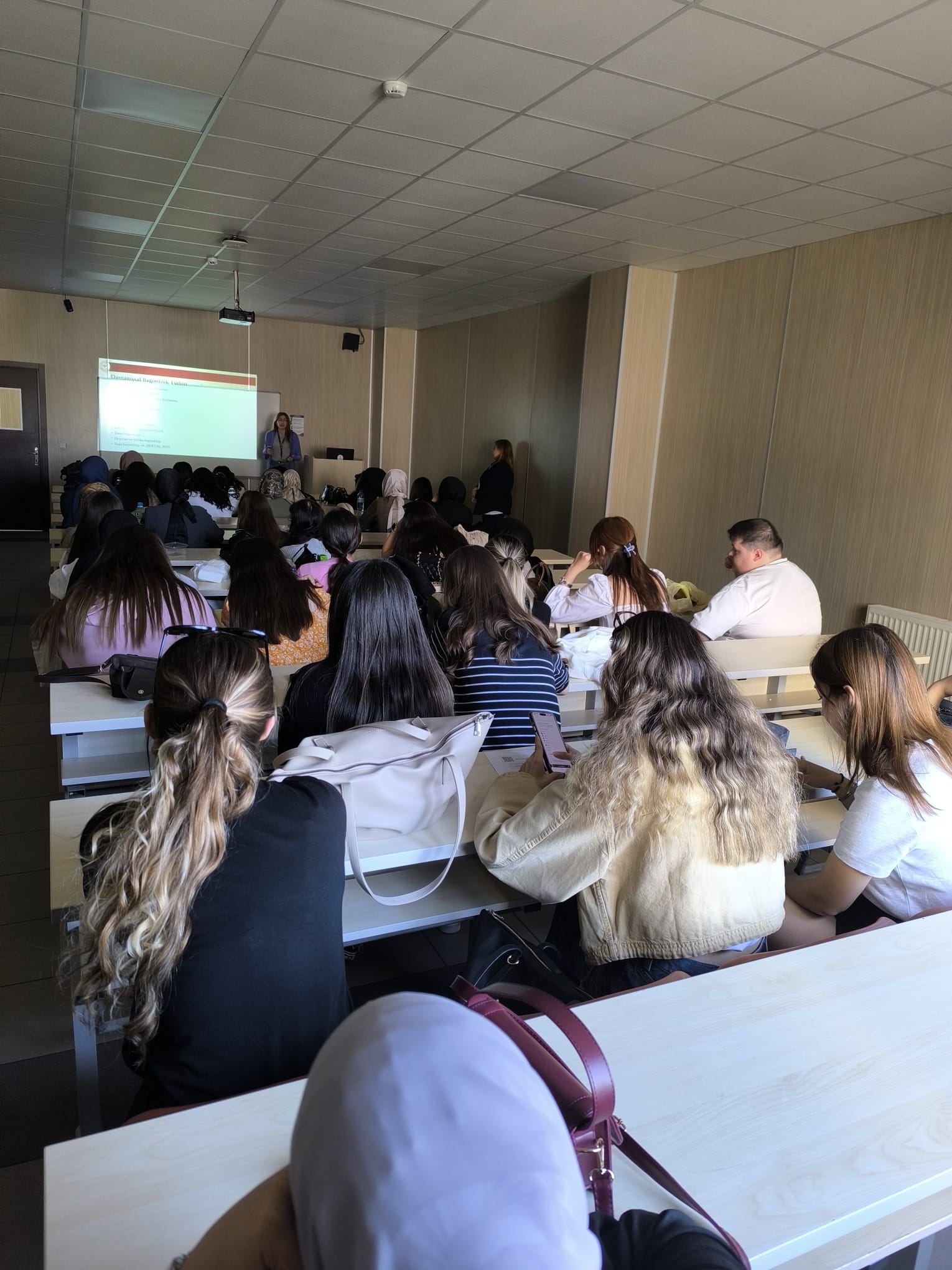The training began with a definition of behavioral addiction by the healthcare team. Behavioral addiction refers to a condition where an individual feels the need to engage in a specific behavior repeatedly, uncontrollably, and persistently without using any substance. In this type of addiction, the person experiences short-term pleasure, relief, or escape from the behavior; however, over time, this behavior begins to negatively affect their daily life, social relationships, academic or professional responsibilities. Even though the individual may recognize the harm of the behavior, they struggle to stop and feel uneasy, tense, or incomplete when unable to perform it. Common types of behavioral addictions include excessive internet use, video gaming, social media, gambling, shopping, and disordered eating behaviors. These addictions are increasingly prevalent, particularly among children and adolescents, as easy access to technology makes supervision more difficult. During addiction, the brain's reward system is activated, and each repetition of the behavior triggers the release of chemicals like dopamine, creating a temporary feeling of well-being. However, in the long term, these behaviors can severely affect a person’s mental health, social environment, and overall quality of life.
In treating behavioral addiction, it is crucial for the individual to recognize the addictive behavior and understand when and why it occurs. Psychotherapy, especially cognitive-behavioral therapy, helps individuals change their patterns of thinking and behavior. Family support, conscious media use, and professional help when necessary play a key role in managing this process healthily.
Addiction also affects stress and emotional regulation systems. Chronic use disrupts the balance of stress hormones and neurotransmitters in the brain, leading to emotional instability and worsening withdrawal symptoms. The neurobiology of addiction develops from the complex interactions between the brain's reward, motivation, memory, and control systems. Therefore, addiction is considered not merely a weakness of will but a chronic brain disease linked to deep changes in brain structure. Treatment approaches are designed with these neurobiological foundations in mind, aiming both to regulate brain chemistry and to change behavior.
Internet addiction refers to a condition in which a person’s excessive and uncontrolled internet use leads to negative effects on their daily life, social relationships, and school or work performance. In this type of addiction, individuals may experience withdrawal symptoms such as restlessness, anxiety, and irritability when unable to connect to the internet. Initially used for entertainment, information, or communication, the internet gradually becomes central to the person’s life, and other activities are neglected. Internet addiction commonly manifests through behaviors such as constant social media use, online gaming, video streaming, or excessive messaging. The individual may feel a deep sense of emptiness or discomfort when not online and fluctuates between losing control and overuse. This situation can cause physical health issues (like sleep disturbances, eye strain, and inactivity) and psychological problems (such as anxiety, depression, and loneliness). It is more commonly observed during adolescence and young adulthood, as this age group is more connected to digital technology. Internet addiction is considered a type of behavioral addiction, and psychological support, time management training, and family involvement play a significant role in treatment. The goal is to achieve balanced internet use and improve quality of life.
In combating addiction, the first and most important step is for the individual to recognize the substance or behavior they are addicted to. Seeking professional help, such as from psychologists, psychiatrists, or addiction treatment centers, increases the chance of recovery. Treatment generally includes individual therapy, group therapy, and medication support when necessary. Additionally, it is essential to address the stressful living conditions or environmental factors that contribute to or maintain the addiction. The support of family and social circles is vital in helping the person stay motivated throughout the treatment process. People are encouraged not to isolate themselves, to strengthen social ties, and to adopt healthy habits. Positive activities like physical exercise, hobbies, and education can replace addictive behaviors. Preventive measures include avoiding early exposure to addictive substances or behaviors, running awareness campaigns, and creating supportive developmental environments for children and youth through school-family collaboration. In cases of technological addictions, strategies like digital detox and limiting internet usage can be helpful.
In conclusion, combating addiction requires a multifaceted and ongoing effort. Raising awareness on both individual and societal levels, establishing support systems, and promoting healthy lifestyle habits are the cornerstones of this process.


